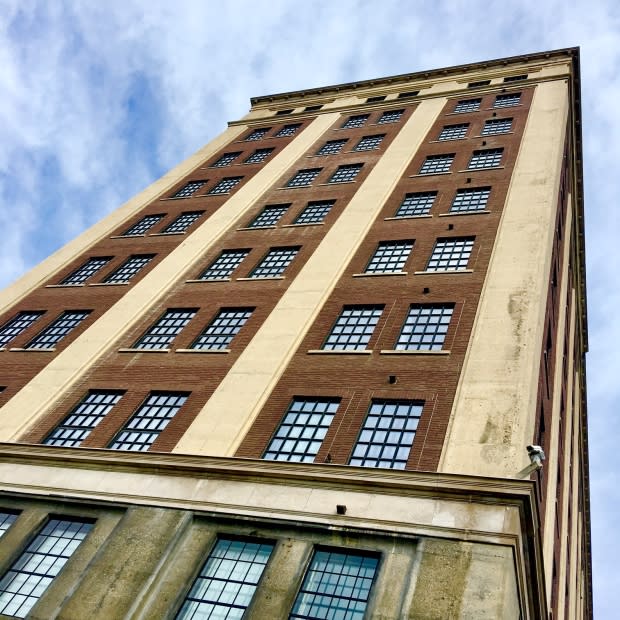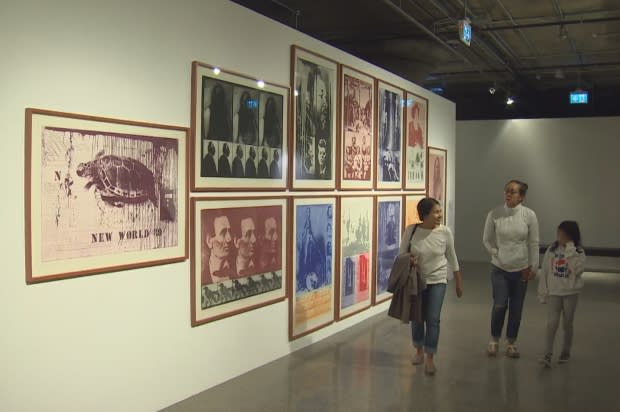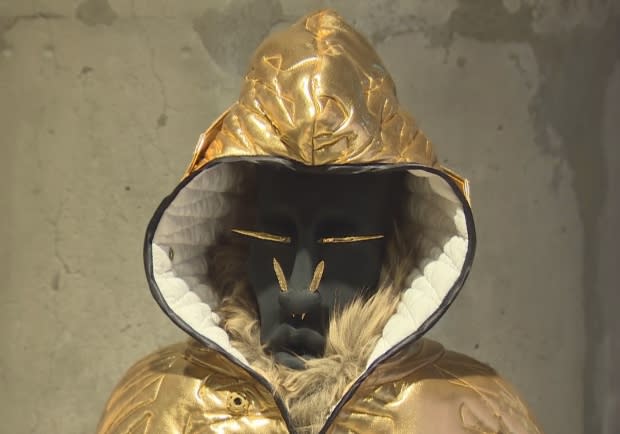Museum of Contemporary Art rises from old Toronto factory building
An art museum that opened on Saturday at a new location in an old factory aims to put Toronto on the map of global contemporary art.
The Museum of Contemporary Art Toronto Canada, or MOCA, now occupies five floors of a heritage building known as the Tower Automotive Building, 158 Sterling Rd., near Lansdowne Avenue and Bloor Street West. The building, in Toronto's Junction Triangle, used to be an aluminum factory.
Admission is free to the public this weekend to celebrate its grand opening.
"We're changing the landscape of the city and the province," Heidi Reitmaier, CEO and executive director of MOCA, said at its official opening on Saturday.

"We want to be an active agent here in the community and elsewhere and open to listening and learning from our visitors, artists and our community."
Reitmaier said the museum is pleased to contribute the social infrastructure in a part of the city that is "booming" with residential and commercial development. She said the museum is about "great art and ideas" but also about people and community.
MOCA, formerly known as MOCCA, or the Museum of Canadian Contemporary Art, had to leave its former location on Queen Street W. three years ago because of condo development. It did not have a home for three years. Staff members said they decided on the current building because it is iconic, historic and a heritage building.

Mayor John Tory told the crowd at the opening ceremony that the museum is a "wonderful, new" addition to the neighbourhood.
Tory said arts and culture are important to Toronto, not only as an industry, but also because they enrich the city and provide a common language for its people.
"I'm so proud that people had the wherewithal to see this through," he said.
5 floors now contain art
On Friday, MOCA held a preview for its members. And in May during Doors Open, it held a preview of its open spaces for the public. Thousands attended.
Rachel Hilton, director of communications and visitor engagement for MOCA, said the museum has gone from 10,000 square feet to 55,000 square feet over five floors. The building has 10 floors altogether.
"It's a much larger, more significant space in which to showcase the work of Canadian and international artists than we had on Queen Street," she said.

The first floor contains a bookstore, cafe, space for the community and an exhibition by Greek artist Andreas Angelidakis called Demos — A Reconstruction, consisting of 74 modules that can be moved and recomposed. Its inaugural exhibition, Believe, is located on the second and third floors. which are the main exhibition floors. Floors four and five are devoted to programming.
Half of floor four is devoted to Art in Use, a project designed by Cuban American artist Tania Bruguera and the Association of Useful Art. The rest of floor four is devoted to the Akin Studio Program, which provides spaces to 32 local artists on a one-year studio residency. The fifth floor contains Laws of Motion in a Cartoon Landscape by Andy Holden. It's an exhibition of moving image works.
Unlike the Art Gallery of Ontario, it does not have a permanent collection, Hilton said. It will be commissioning and borrowing work.
"We are really wanting to be on that world stage for contemporary art," she said.
'Amazing opportunity to be kind of different'
Reitmaier told CBC Radio's q that the building is nearly 100 years old. It was owned by Alcan for much of its life, and during the First and Second World Wars, it produced ammunition.

According to MOCA's website, the building was considered "innovative" when it opened in 1919 because it did not employ beams for support, using what is called "concrete flat slab architecture."
"Each floor is a slab of reinforced concrete and is supported by concrete columns — the 'mushrooms' you see on each floor, which distribute the weight to the floor below," it reads.
At one point, after it was a working factory, Reitmaier said it was used by graffiti artists, and raves were held there. The building was bought and has been refurbished, she added.
"For MOCA, it differentiates us in a way. How many museums do you know that re-purpose industrial buildings and create a kind of sense of aesthetics but also a kind of necessary architecture? For us, it's an amazing opportunity to be kind of different," Reitmaier said.
"We're really, really committed to the idea that this is the people's museum. This is the listening museum, and we're here for the community in Toronto and beyond."

